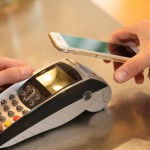Biometric mobile payments to hit 1T transactions, $51B in revenue by 2022

Biometric transactions may soon replace cash payments: By 2022, mobile biometric solutions will authenticate more than 1 trillion transactions annually, driving the market to $50.6 billion in annual revenue that year, according to a new report from Acuity Market Intelligence.
In 2022, more than 5.5 billion biometrically-enabled mobile devices will be in use, creating a global platform for these payments, the report noted.
“Biometric have become a mainstream convenience for unlocking smartphones and verifying on-device transactions,” said Maxine Most, Acuity’s principal and lead analyst, in a press release. “But the market is evolving towards a hierarchy of integrated biometric authentication methods that range from simple device-based verification to third-party biometric Cloud, or server-side, solutions. These solutions will replace traditional digital identity schemes and provide more secure and reliable identity assurance on a global scale.”
Annual biometric transaction revenue will increase from $474 million in 2017 to $18 billion in 2022, exceeding a 100% cost annual growth rate, the report projected. Biometric app revenue will grow 26% during this period, increasing from $9.4 billion to $29 billion annually. And mobile biometric transaction volume is expected to reach 1.4 trillion annually by 2022, with more than 70% based in the cloud, as biometric app downloads exceed 16.7 billion that year, according to the report.
Growth of biometrics
In 2017, the amount of money in mobile payments authenticated by biometrics was expected to grow to nearly $2 billion, up from $600 million in 2016, according to a May report from Juniper Research. This payment method could officially kill cash by as early as 2030, a report from IEEE stated.
Apple Pay kicked off the initial growth of biometric mobile payments, allowing customers to make payments in stores and on apps using their fingerprint to access banking information. Android Pay and Samsung Pay furthered the movement toward these payments, the Juniper Research report noted.
Biometric payment methods have been boosted by the growing availability of fingerprint sensors on phones and tablets: About 60% of smartphone models shipped in 2017 had fingerprint sensors, the report also found.
Biometrics other than fingerprints are also expected to gain popularity for payments in the coming years: Mastercard’s Identity Check Mobile service, set to go live later this year, allows users to scan their fingerprints or take a selfie to validate their identity and make a payment. After a soft launch in 2016, Mastercard surveyed users and found that 74% of respondents said biometrics like fingerprints or selfies were easier to use than traditional passwords. And 90% said they believed they would use biometrics for online payment security in the future.
A recent report from Fujitsu predicted that biometric authentication will soon become the standard for unlocking and driving vehicles, offering a more secure and personalized option than keys.
While biometrics are a strong security option, they are not completely failproof. A layered security approach remains best for any device.
Source: TechRepublic – Biometric mobile payments to hit 1T transactions, $51B in revenue by 2022





























